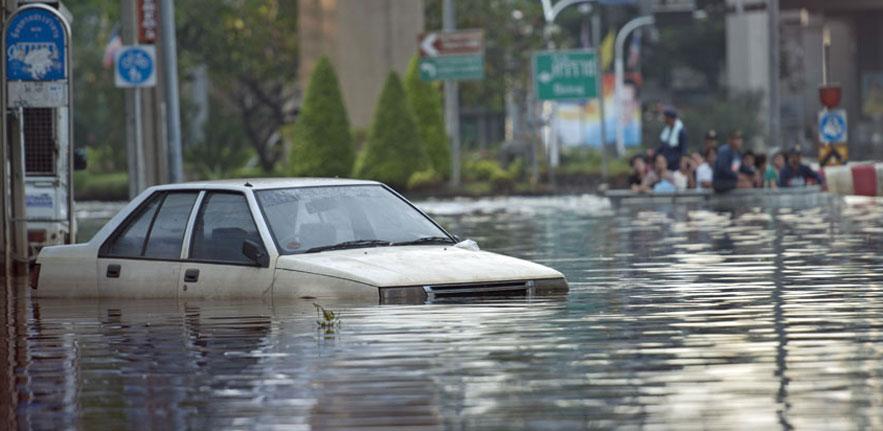
6 July 2018 – Miroslav Petkov, Director in S&P Global Ratings' Sustainable Finance Team, considers the possible growth of climate adaptation financing in the face of increasingly adverse environmental conditions.
Adaptation projects require increased levels of financing – that much is clear. Following multiple extreme weather events last year, the international community has issued multiple calls to strengthen infrastructure against extreme weather events and the expected impact of climate change. Those most affected (such as island and developing nations) are leading this charge – and seeking more investment in order to fund higher levels of resilience for both communities and the economy.
Enabling adaptation finance
Mobilising both public and private funds is crucial. In the case of the former, Fiji’s pioneering 2017 green bond remains a key example of sovereign adaptation financing for a vulnerable island country. Given Fiji’s exposure to floods and tropical cyclones – as well as longer-term threats from rising sea levels – the US$50 million green bond is focused on climate adaptation projects as well as mitigation. The International Finance Corporation (IFC), which helped Fiji issue the bond, has since released guidelines to help other developing nations do the same.
However, sovereign funds alone will not suffice. This is because it is very unlikely that governments will be willing or able to increase budgets and debt burdens to accommodate the necessary funds. We acknowledge that political motivation, such as wishing to appear progressive to the international community, may have a bearing on such considerations, but this influence is likely to be limited. So our expectation remains that states will play a key role in mobilising private-sector funds, alongside their own efforts.
Hurdles to private investment
Yet enabling private investor capital for adaptation projects presents its own challenges. The mobilisation of private finance differs in scale and speed between sectors of the climate financing universe. For the most part, we have seen private financing emerge to support new business opportunities in mitigating the carbon impact of traditional sectors – such as in the energy and construction industries. In the energy sector, for example, the private sector is contributing to the deployment of renewable capacity at a rapid pace, as shown by the US$173 billion in outstanding green bonds in the green energy sector in 2017. However, for adaptation projects, the lack of private funding is acute.
The key challenge for the growth in adaptation is the difficulty of monetising the benefit of adaptation projects absent a clear cashflow stream, in contrast to mitigation projects. Most of the benefits of adaptation projects are in making society and business more resilient to unfavourable weather events. However, it is often hard to quantify the financial benefit of reduced damages or increased revenues had the adaptation project not been carried out.
Consequentially, public resources or development banks finance most adaptation projects. In turn, this means that in times of strained public finances, these critical resilience projects are unlikely to be seen as high priority. And this is exacerbated when the expected benefit of the adaptation project may not become evident in the short term.
High seas, high demand
However, extreme weather events and rising sea levels are increasingly highlighting the benefits of adaptation financing – especially in developing countries. The floods that swept across India, Nepal and Bangladesh in September 2017 resulted in devastating material damage and loss of life, as did Hurricanes Irma and Maria in the Caribbean Islands in the same year.
Indeed, the United Nations Environment Programme (UNEP) estimates that the cost of adapting to climate change in developing countries is forecast to reach US$280 billion-US$500 billion a year by 2050. And we believe that the recent increase in material damage to economies from extreme climatic events may refocus the attention of both public authorities and private investors on the need for adaptation investments. In turn, this may accelerate the growth of adaptation green bonds in the medium term.
Ultimately, we expect that the amount allocated to adaptation projects may increase. We expect that the financing for adaptation projects will continue to form part of the wider group of green bonds predominantly focused on mitigation projects, rather than through 100 per cent adaptation green bonds. And while developments banks, local authorities, and water companies are likely to continue as the main issuers of such bonds, private finance will likely also increase with the severity of the consequences of climate change.
S&P Global Ratings and CISL
S&P Global Ratings produces extensive research on recent sustainable finance trends. These include the growth of the green bond market place, the diversification of sustainable finance through alternative financing (green sukuk, green CLOs, etc) and support for adaptation financing. The aim of this sustainable finance research is to provide essential intelligence for the sustainable development market – to educate issuers, investors and intermediaries about movements in this relatively nascent space and work towards enabling more sustainable finance for both mitigation and adaptation projects. In this way, our work aligns with CISL’s sustainability research, which can play a crucial role in helping businesses and policy leaders provide solutions for those most vulnerable to climate change – often living in warmer, less predictable climate. While CISL’s Centre for Sustainable Finance strives towards a sustainable financial system, S&P Global Ratings’ analytical capabilities similarly aim to help investors, business leaders and policymakers to build a more sustainable global economy.





